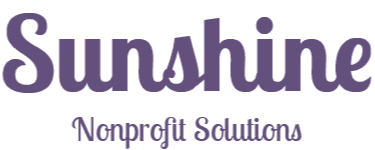
Advocacy for the Protection of Social Welfare Programs

The social safety net, which includes essential programs like Head Start, CCDBG, Title I for education, Title X for family planning services, and more, is facing unprecedented threats due to proposed federal budget cuts. These reductions jeopardize programs that serve millions of low-income and disadvantaged individuals, leaving communities vulnerable and at risk.
The Power of Collective Action
Facing these challenges requires a collective, united effort. Letters, statements, and media coverage are essential, but they are not enough on their own. Advocacy must go further, and the most powerful step we can take is building strong coalitions. Coalitions amplify voices, bring together diverse perspectives, and create a force too significant to ignore.
A Roadmap for Advocacy
Here, we outline effective advocacy steps, with a specific focus on coalition building, to protect and strengthen the programs that so many rely upon.
The Importance of Coalition Building in Advocacy
Why Coalitions Matter
Coalitions are the backbone of impactful advocacy. They unite diverse individuals, organizations, and communities under a shared goal, making it easier to mobilize resources, influence policymakers, and demonstrate strong public support.
Examples of Effective Coalitions
For example, when cuts threaten Title I funding for schools in low-income areas, education-focused coalitions can include teacher unions, local parent-teacher associations, and national organizations like the National Education Association. Together, these groups create a unified and powerful message policymakers cannot ignore.
You can apply the same strategy across affected programs:
- Family planning services cuts? Partner with Planned Parenthood and the National Family Planning & Reproductive Health Association.
- Housing assistance reductions? Collaborate with Habitat for Humanity and the United Way.
- Social Security threats? Build alliances with AARP and senior advocacy groups.
- Medicaid cuts? Work with the National Kidney Foundation, the American College of Physicians, and the American Hospital Association.
- Early childhood funding reductions? Engage organizations receiving CCDBG funds, preschool development funds, and local schools alongside universities.
Beyond Coalitions: A Holistic Approach
But coalition building is only one piece of effective advocacy. Below is a step-by-step approach to amplify your impact.
Effective Advocacy Steps: Protecting Our Children and Families
Step 1: Educate Potential Advocates
Mobilization begins with awareness. Reach out to a diverse audience of potential advocates, including families, community partners, business leaders, and your board of directors. Host informational sessions or webinars to explain what's at risk and why advocacy matters.
Step 2: Provide Advocacy Training
Advocacy skills don't come naturally to everyone. Offer workshops to teach basic advocacy techniques, like how to make phone calls to legislators or write compelling, personalized emails. Encourage clients to share their stories about how these programs have impacted their lives.
Examples of Effective Advocacy Tools:
- Personal Letters: Include personal stories backed by data (e.g., how Head Start helped a child succeed, alongside community-wide achievement statistics).
- Organizational Letters: Request meetings with legislators and advocate for funding to send families and staff to these meetings.
Step 3: Use Credible Data to Strengthen Your Case
Policymakers rely on credible data when making decisions. Use:
- National data to highlight widespread program value.
- Local data to spotlight community impacts (e.g., Head Start and CCDBG bring $276M annually to Miami-Dade County).
Step 4: Fundraise for Advocacy Efforts
Support initiatives like:
- Educational programs about legislative processes.
- Gathering and publishing local impact data.
- Sending advocates to meet policymakers in person.
Step 5: Deliver Compelling Presentations
Tailor messages to your audience with:
- Clear, concise language.
- Visuals like infographics.
- A focus on the social safety net’s collective impact, not just single programs.
Step 6: Build Coalitions
Identify allies across sectors:
- Education groups for Title I advocacy.
- Health organizations for Medicaid/family planning.
- Housing activists and senior groups for related programs.
Step 7: Understand Legislators' Needs
Research policymakers’ priorities and voting history. Partner with groups like the League of Women Voters to host town halls for direct dialogue.
Expanding the Context Around the Budget
A Unified Narrative
Avoid siloed advocacy. Highlight how programs interconnect to strengthen communities:
- Short- and Long-Term Gains: Show how Head Start benefits children and future workforce readiness.
- Local Economic Impact: Emphasize job creation and economic growth tied to funding.
- Broader Strategy: Frame programs as part of a national vision for equity and opportunity.
Create Significant Change
How You Can Help
- Contact for Assistance: Reach out for free guidance on advocacy training or strategy.
- Upgrade Advocacy Tools: Push organizations to improve websites and training materials.
- Fundraise for Impact: Finance educational initiatives or advocate travel.
- Join Coalitions: Connect with state/national groups like Head Start associations.
Act Today
Together, we can protect these vital programs. Contact me for support—let’s make a difference.
About Dr. Cathleen Armstead
Dr. Armstead is a nonprofit leader with 25+ years in program evaluation, advocacy, and management. Founder of Sunshine Nonprofit Solutions, she empowers organizations to maximize impact. Her work spans local to national policy influence, driven by a commitment to equity. Outside of work, she enjoys swimming, biking, and exploring cultures through travel.
Reach Out Today
Share your thoughts or requests to help us support your nonprofit's mission.
Let's collaborate on data-driven strategies for impactful growth and community benefit. Reach out to us now.
Contact Us
Office location
8948 Sw 224Th Terrace, Cutler Bay, Florida, 33190Give us a call
(407) 304-7689Send us an email
[email protected]